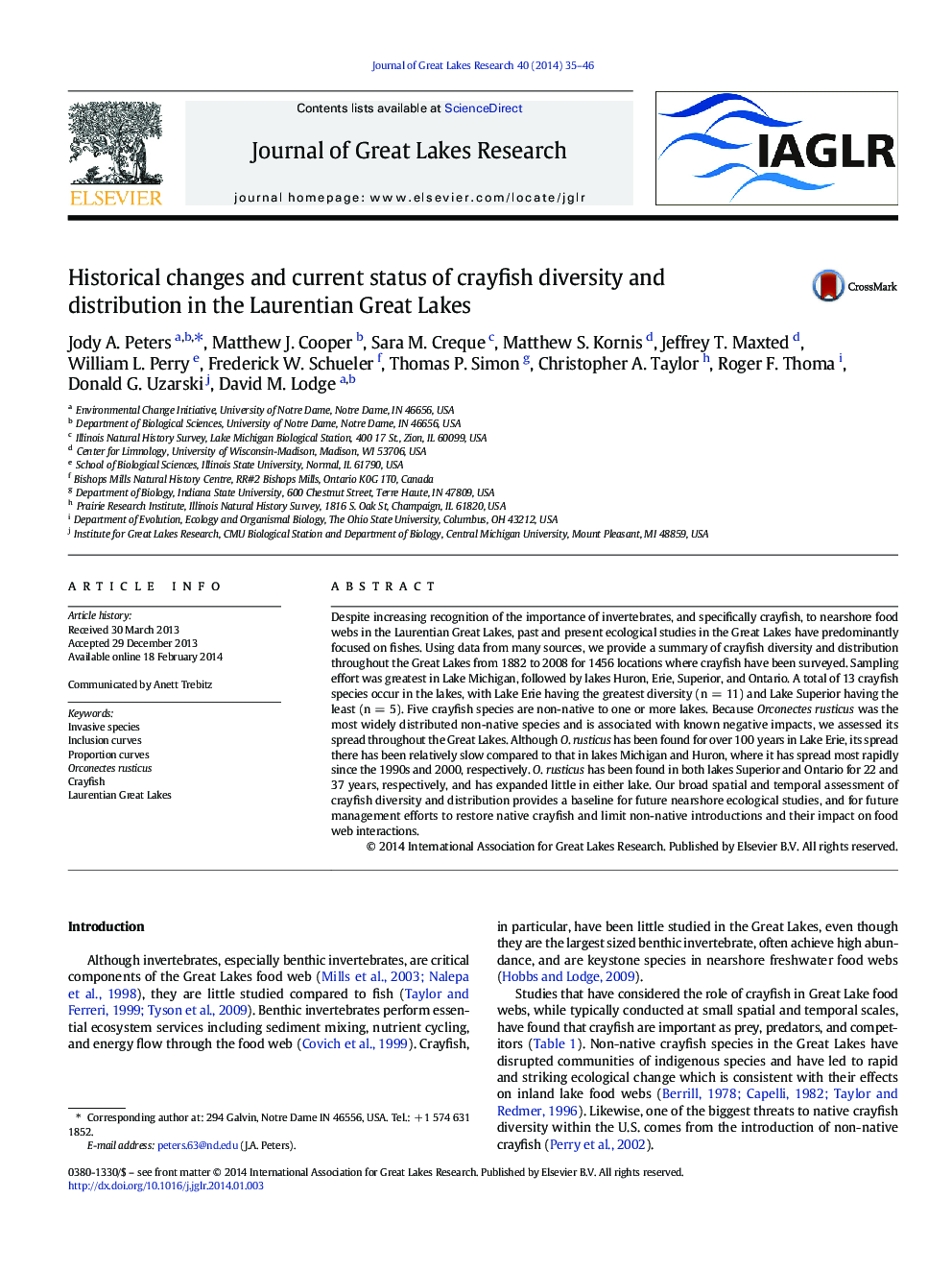| Article ID | Journal | Published Year | Pages | File Type |
|---|---|---|---|---|
| 6305350 | Journal of Great Lakes Research | 2014 | 12 Pages |
Abstract
Despite increasing recognition of the importance of invertebrates, and specifically crayfish, to nearshore food webs in the Laurentian Great Lakes, past and present ecological studies in the Great Lakes have predominantly focused on fishes. Using data from many sources, we provide a summary of crayfish diversity and distribution throughout the Great Lakes from 1882 to 2008 for 1456 locations where crayfish have been surveyed. Sampling effort was greatest in Lake Michigan, followed by lakes Huron, Erie, Superior, and Ontario. A total of 13 crayfish species occur in the lakes, with Lake Erie having the greatest diversity (n = 11) and Lake Superior having the least (n = 5). Five crayfish species are non-native to one or more lakes. Because Orconectes rusticus was the most widely distributed non-native species and is associated with known negative impacts, we assessed its spread throughout the Great Lakes. Although O. rusticus has been found for over 100 years in Lake Erie, its spread there has been relatively slow compared to that in lakes Michigan and Huron, where it has spread most rapidly since the 1990s and 2000, respectively. O. rusticus has been found in both lakes Superior and Ontario for 22 and 37 years, respectively, and has expanded little in either lake. Our broad spatial and temporal assessment of crayfish diversity and distribution provides a baseline for future nearshore ecological studies, and for future management efforts to restore native crayfish and limit non-native introductions and their impact on food web interactions.
Related Topics
Physical Sciences and Engineering
Earth and Planetary Sciences
Earth and Planetary Sciences (General)
Authors
Jody A. Peters, Matthew J. Cooper, Sara M. Creque, Matthew S. Kornis, Jeffrey T. Maxted, William L. Perry, Frederick W. Schueler, Thomas P. Simon, Christopher A. Taylor, Roger F. Thoma, Donald G. Uzarski, David M. Lodge,
